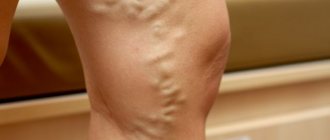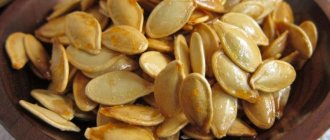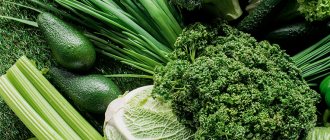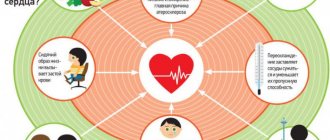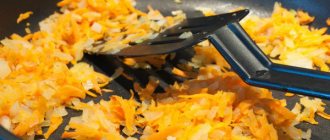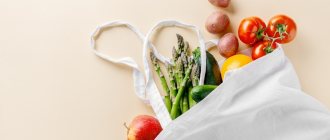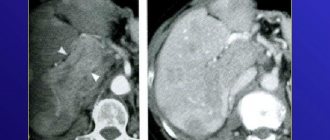The role of veins in the circulatory system
The modern rhythm of life is accompanied by a lot of stress that surrounds us at every step. Constant, permanent stress, to which we are somewhat accustomed, greatly weakens our body. It is necessary to be able to maintain a balance of mental and physical health, and it is also important to pay attention to other components of our external and internal health, such as regular physical activity, daily routine and rest, diet, and sufficient fluids.
In this article, we will look at one of the most important components of health and wellness - the cardiovascular system, and more specifically, the role of veins and vessels in the circulatory system. Why is it that veins receive so much attention in matters of maintaining health and, importantly, improving a person’s quality of life? Many will easily remember a picture from a school textbook, which schematically depicts a person riddled with red and blue “twigs.” The blue ones represent the venous circulatory system. Everyone knows that blood, having passed from the heart through the arteries, arterioles and capillaries, is then sent back through the veins to be enriched with oxygen again. Everything returns to normal, and so does the blood.
However, it is not so easy to direct the blood flow from bottom to top, from the lower extremities to the chest, therefore the veins of the lower extremities have a highly developed muscular layer, as well as valves. And the veins located at the level of the head do not have muscles at all and are called blood vessels of the muscleless type.
As soon as the tone and elasticity of the venous wall decreases or the venous pressure increases, the veins immediately dilate. And the veins in the legs are the first to suffer.
Major vascular diseases of the legs
Vascular diseases of the lower extremities can strike at any age, sometimes with the development of complications.
Main vascular diseases of the legs:
- Atherosclerosis
- Saphenous vein thrombosis
- Phlebeurysm
Symptoms of venous disease of the legs can appear at a very early stage and if they are detected in time, the process can not only be stopped, but also completely get rid of the developing vascular disease of the lower extremities.
For atherosclerosis
arteries are affected as a result of cholesterol deposits with the formation of plaques on the walls of blood vessels, which can lead to complete blockage. As a result, ischemia develops - insufficient oxygen supply to cells and tissues.
Most often the popliteal, femoral and tibial arteries are involved in the pathological process.
The development of the disease occurs gradually and in the first stages there may be nothing to show for it. Subsequently, the patient develops pain in the lower extremities, especially with prolonged walking, and a feeling of numbness in the feet. A decrease in temperature is felt on the legs, pallor and cyanosis are visible, and cramps occur. Over time, a person develops intermittent claudication and trophic changes occur in the form of delamination of nails and the formation of ulcers on the fingers and heels.
Symptoms of atherosclerosis:
- muscle pain in the legs, in the later stages even the feet hurt, and the pain cannot be relieved with painkillers;
- limited mobility of the affected leg;
- pain along the affected artery - first during physical activity, then at rest;
- intermittent claudication - after walking some distance, a person is forced to stand up and give his legs a rest, and then he moves on until the next attack of weakness;
- tingling, numbness in the affected area;
- loss or slow growth of hair on the legs;
- paleness when raising the legs and sharp redness when lowering them;
- rapid freezing of feet;
- sores on the skin;
- purple fingers;
- absence of pulsation in the affected artery;
- areas of darkening on the skin are signs of the onset of gangrene in advanced stages;
- coldness of the skin of the leg;
- reduction in the mass and volume of the muscles of the thighs and legs.
At the beginning of the disease, as a rule, one limb suffers, then the process becomes symmetrical - this is a signal that the arteries are affected on both sides. An objective examination reveals the absence of pulsation in the popliteal fossa, thigh and ankle. Men get sick more often.
Causes
: poor nutrition, stress, smoking, diabetes.
We recommend
“TOP 15 harmful foods for adults and children, the most dangerous food additives” Read more
Saphenous vein thrombosis
- this is the formation of blood clots (thrombi) inside the lumen of the vein. Most often, venous thrombosis develops in the vessels of the lower extremities, but it can also occur in any other parts of the body, such as the veins of the upper extremities, neck, chest, etc.
There are three main causes of venous thrombosis
:
- Hypercoagulation
- increased activity of the blood coagulation system (hereditary predisposition, genetic defects, autoimmune diseases).
- Violation of the vascular wall
- Normally, the inner surface of the blood vessel (endothelium) is smooth. Pathological changes make the endothelium rough. Platelets, moving freely along with the blood flow, cling to the rough surface of the affected endothelium and a blood clot forms in this place.
- Blood flow disturbance
(stasis - stagnation of blood) blood flow is one of the main mechanisms that prevent the formation of blood clots, since the speed of blood flow does not allow platelets to accumulate in a certain place. Consequently, a decrease in blood flow speed promotes the formation of blood clots.
Provoking factors for the development of venous thrombosis
:
- Abnormal vein structure.
- Phlebeurysm.
- Excess body weight. Obesity of various stages leads to venous stagnation in the lower extremities, provoking thrombus formation.
- Prolonged bed rest.
- Oncological diseases.
- Pregnancy.
- Infections.
- Trauma and surgery.
- Taking medications that increase blood clotting.
- Smoking. When smoking, more than 300 different carcinogenic and toxic substances are released, which enter the systemic bloodstream through the alveoli of the lungs and cause damage to the vascular wall.
If a person has varicose veins of the lower extremities, a small trigger (“trigger”) is enough - blood thickening, infections of various natures, stress factors and physical activity, injuries, surgical interventions - for a blood clot to form in the venous system.
Venous complications are very dangerous, so it is important to know the first signs of superficial and deep vein thrombosis.
Clinical signs of superficial vein thrombosis:
- burning, throbbing pain along the thrombosed veins, limiting limb movements;
- a stripe of redness (hyperemia) in the projection of the affected vein;
- local increase in temperature;
- increased sensitivity (hyperesthesia) of the skin;
- in some cases, an increase in body temperature up to 38 ° C, malaise, and chills are noted.
Clinical signs of deep vein thrombosis:
- severe swelling below the site of blockage of the vessel;
- change in skin color to bluish-purple due to disruption of blood flow, often throughout the entire limb;
- bursting pain that intensifies with exercise;
- local temperature increase;
- general weakness, malaise.
Phlebeurysm
– expansion and lengthening of veins with thinning of the venous wall and the formation of nodes, as a result of pathology of the venous walls and valve failure. Normally, a healthy valve works correctly and blood flows in one direction; with varicose veins, the valve is deformed and blood flow is disrupted.
This is the most common peripheral vascular disease. According to epidemiological data, various forms of this disease occur in 26-28% of women and 10-20% of men of working age.
Risk factors for developing varicose veins:
- Pregnancy is traditionally considered one of the main risk factors for the development of varicose veins, explaining the more frequent occurrence of varicose veins in women. It is generally accepted that the main provoking factors are an increase in BCC (circulating blood volume) and compression of the pregnant uterus by the retroperitoneal veins.
- Obesity is a proven risk factor for varicose veins. At the same time, an increase in body mass index to 27 kg/m2 and above leads to an increase in the incidence of the disease by 33%. A high degree of food processing and a decrease in raw vegetables and fruits in the diet has led to a constant deficiency of plant fibers necessary for the remodeling of the venous wall and chronic constipation, which causes a permanent increase in intra-abdominal pressure.
- Lifestyle has a significant impact on the development and course of varicose veins. In particular, the adverse effects of prolonged static loads with heavy lifting or immobile standing and sitting have been proven.
- Dyshormonal conditions are involved in the pathogenesis of varicose veins. Their role has been progressively increasing in recent years, which is due to the widespread use of hormonal contraception, the popularization of hormone replacement therapy during the premenopausal period and in the treatment of osteoporosis. It has been proven that estrogens and progesterone, as well as their derivatives, reduce the tone of the venous wall due to the gradual destruction of collagen and elastic fibers.
- Varicose veins are a disease that is partial to the fair sex. On average, women suffer from varicose veins in the legs three times more often than men.
Here are the symptoms that should make you wary - these are the symptoms of varicose veins
:
- Pain - the variety of pain with varicose veins is also very rich (hot throbbing pain, night cramps and itching in the muscles, pain when walking, pain along the venous trunks, general pain and aching in the legs).
- Swelling in the legs.
- Feeling of fullness and heaviness in the legs.
- Skin changes - first the skin becomes dry, pigmentation appears - the skin of the legs darkens, becomes covered with brownish “spots”. Later, these symptoms may be joined by various dermatitis, eczema and so-called trophic disorders in the form of poorly healing wounds up to the formation of ulcers.
- Twisted, elongated varicose veins protruding above the surface of the skin of the legs and feet, with saccular, cylindrical or mixed extensions.
- Spider veins (telangiectasia). Yes, the group of patients with varicose veins also includes people with dilated small veins, since the reasons for their appearance are the same.
Targeted nutrition tips
that will increase your energy level by 10 out of 10
From TOP nutritionists of the MIIN
Get tips
The earliest stages of the development of varicose veins are very difficult to identify and diagnose, because at the earliest stages of the disease its main symptom – varicose veins – is absent. And the first and earliest symptoms of varicose veins, such as a feeling of heaviness in the legs, moderate pain in the legs, increased fatigue, also occur in the initial stages of arterial diseases, flat feet, and lumbar osteochondrosis.
The very first symptoms of varicose veins in the legs, by which you yourself can suspect the onset of varicose veins, are an increase in the pattern of veins on the skin of the legs. This defect, as we have already noted, is most often noticed by young women: they notice wreaths on their legs or thighs that were not there before. There may be no other complaints at the onset of varicose veins.
The beginning of the development and progression of varicose veins is already manifested by varicose nodes protruding above the surface of the skin. This is the main symptom of beginning varicose veins. Varicose veins can most often be found on the inner surface of the legs or thighs. When walking for a long time or standing for a long time, such symptoms of varicose veins appear as fatigue, heaviness in the legs, a feeling of fullness (often in the calves). These symptoms are especially pronounced during prolonged periods of sitting or standing. Aching or acute pain also appears in the areas of varicose veins (dilated veins), cramps in the calf muscles, especially in the evening, and sometimes at night.
The first signs of trouble in the veins are manifested by swelling of the legs at the end of the day. Swelling usually occurs in the evening, especially after standing for a long time. After an overnight rest, the swelling completely disappears. These symptoms of varicose veins go away quickly at first if you rest, especially if you lie down. However, the disappearance or significant reduction of these symptoms when walking and after a night's rest are very characteristic symptoms of varicose veins.
But varicose veins, if not seriously addressed, do not recede, but progress. Over time, symptoms of varicose veins appear such as convoluted dark blue intradermal veins protruding above the surface of the skin of the legs and feet. All this is accompanied by bursting pain in the legs and calves, a feeling of heat in the legs, night cramps in the calf muscles, and swelling. Gradually, these symptoms are accompanied by skin changes. First, the skin becomes dry, it darkens, and pigment appears on it - brown spots. A little later, so-called trophic disorders begin to appear: poorly healing wounds, eczema and even ulcers.
What is the prevention of varicose veins of the legs (lower limbs)
Prevention of varicose veins of the legs (lower limbs) allows you to avoid the early development of symptoms of chronic venous insufficiency and live a full life. Many people would like to avoid developing vein pathology. Despite this, few people are involved in the prevention of varicose veins. Modern statistics and observations of professionals show that even those patients who do not have a hereditary factor are susceptible to varicose veins. Therefore, it is necessary to begin the prevention of varicose veins of the lower extremities long before the first symptoms of venous insufficiency appear.
Prevention of varicose veins of the legs
It goes without saying that if chronic severity, evening swelling of the lower extremities, or visible dilation of the veins appears, it is necessary to contact a specialist in the treatment of veins, a phlebologist.
Products for vascular health
There are many studies proving that vascular health directly depends on a person’s lifestyle, and specifically on nutrition. Regular consumption of foods harmful to blood vessels: fatty meat and dairy products, smoked meats, sausages, low-quality confectionery products, processed foods and fast food sooner or later guarantees a decrease in the lumen of the arteries and blockage of the veins. Below are the most beneficial foods for vascular health.
- Lemon
— vitamin C, essential oils, antioxidants are necessary for both sick and healthy people. Cardiologists advise using lemon constantly, and healing the heart with drugs based on it, since citrus not only provides vitamins, but also: reduces the content of “bad” cholesterol in the blood; removes toxins; dissolves old cholesterol deposits. Lemon is a product that increases the elasticity and overall tone of blood vessels and veins of the lower extremities.
- Beet
– this vegetable is traditionally considered one of the most necessary in the menu of patients with atherosclerosis. In raw and boiled form: beets cleanse arteries and are used to strengthen and improve the condition of blood vessels and blood composition; the product helps reduce blood pressure; helps reduce swelling and reduce excess weight; It strengthens the heart muscle well, as it contains many minerals it needs.
- Pumpkin
- recommended for vascular and heart health in any form. It is baked, stewed, boiled, and eaten raw in salads. Pumpkin juice, which is mixed with fruits and other vegetables, is also very useful. Pumpkin is famous for: reducing the amount of cholesterol in the blood; helps remove toxins and prevents clogging of blood vessels; helps reduce excess weight; The vitamin and mineral composition, as well as other beneficial substances in the seeds and pulp, strengthen and nourish the heart muscle. There are practically no contraindications for use, with the exception of individual intolerance, which is rare, since pumpkin is considered a hypoallergenic product.
- Garlic
– improves the taste of dishes and treats the cardiovascular system. It has its healing effect both when added to food as a seasoning and as part of traditional medicine: it lowers blood pressure and normalizes blood sugar levels; prevents blood cells from sticking together, thereby preventing blood clots from forming; garlic dissolves cholesterol plaques on the walls of blood vessels. Since garlic is a product that strengthens the heart, it is used even after a heart attack, but not immediately and is introduced into the diet gradually. Garlic is especially effective when combined with lemon.
- Ginger
— thanks to minerals, vitamins, essential oils and amino acids, ginger is interesting for heart patients and healthy people. It can replace many chemical drugs, since ginger strengthens the heart muscle and is a good prevention of its thinning; relieves spasms of cerebral vessels; thins the blood no worse than aspirin, thereby preventing the formation of blood clots; is a natural antioxidant - has a rejuvenating effect on the entire body; cleans blood vessels from fatty deposits; Useful for both high and low blood pressure. The product has restorative properties for vascular diseases.
- Chilli
– studies have shown that capsaicin, contained in chili peppers, works effectively in two directions - on the one hand, it reduces the level of “bad cholesterol”, while not affecting the level of “good” cholesterol, it fights cholesterol plaques: it prevents the clogging of blood vessels with fat and breaks down already formed clots so that blood can circulate freely.
On the other hand, capsaicin inhibits the activity of the gene responsible for the production of a substance called cyclooxygenase-2. Every person normally has this substance, but heart patients and hypertensive patients have more of it than they need. The danger is that cyclooxygenase-2 causes small muscles located around blood vessels to contract. And this interferes with normal blood supply and provokes surges in blood pressure.
- Cranberry
– this is not just a natural concentrate of vitamins and minerals. The anti-inflammatory, antioxidant properties of this berry save blood vessels from many problems: they reduce the level of “bad” cholesterol and increase the level of “good” cholesterol in the blood, thin the blood, protecting against stroke, cranberries strengthen the heart muscle and the walls of arteries and veins.
- Green tea
— tea made from unfermented green leaves is considered one of the most beneficial drinks for blood vessels. Green tea helps reduce cholesterol levels in the blood and gently cleanses the walls of arteries with long-term consumption. Of course, it is important to understand that the caffeine contained in tea can increase blood pressure, so you should not drink more than 2 cups of green tea per day.
- Nuts
— the concentration of nutrients in nuts is high. Therefore, nuts are necessary for the heart and blood vessels, which need plant protein, minerals, vitamins, amino acids, which are found in abundance in nuts. Nuts nourish the heart muscle and help the walls of veins, capillaries and arteries remain elastic and strong. Preference is given to walnuts, hazelnuts, and macadamia.
- Linseed oil
— a prerequisite for the use of this oil is its freshness: when the container is opened, the product begins to quickly oxidize, acquires an unpleasant taste and smell and loses its beneficial properties. For blood vessels and the heart, flaxseed oil is good because: flaxseed oil reduces the level of “bad” cholesterol and glucose in the blood, prevents the formation of blood clots in the veins, makes the walls of blood vessels impenetrable and elastic, which helps to avoid pressure surges. Fans of flaxseed oil add it to fresh salads.
- Olive oil
— unsaturated fatty acids of olive oil are very useful for both the treatment of atherosclerosis and its prevention. Olive oil prevents the formation of blood clots, which means it prevents myocardial infarction and reduces the likelihood of stroke. It is taken on a spoon on an empty stomach and added to vegetable salads.
- horse chestnut
- Everyone who has problems with veins in their legs has probably heard about this tree. Medicinal ointments against varicose veins, thrombophlebitis, edema and hematomas are made from the flowers, leaves and fruits of horse chestnut. The active ingredients of horse chestnut - esculin and escin - have a beneficial effect on blood vessels: they accelerate venous blood flow, fight capillary fragility, prevent the formation of blood clots, reduce swelling in the legs, stimulate the production of antithrombin - a substance responsible for the natural protection of blood vessels from thrombophlebitis.
We recommend
“Vitamins for skin and hair: content in food and how to take them correctly” Read more
We recommend
“Nutrition for diarrhea: top 10 foods to help” Read more
Strengthening the blood vessels of the legs with folk remedies
You can supplement the basic methods of strengthening the vascular system by resorting to traditional medicine. Folk remedies will help improve the condition of the circulatory system, eliminate the feeling of heaviness and even swelling of the lower extremities. For these purposes, healing decoctions and infusions, foot baths, etc. are used.
There are many recipes for healing herbal foot baths. This is how baths are used based on the following herbal infusions: dandelion, red clover, chamomile, nettle leaves, St. John's wort, linden blossom, etc. The selected herbs are poured with boiling water in advance and allowed to brew for 15 minutes, after which the resulting decoction is added to warm water. The water procedure for the feet lasts 15-20 minutes.
!
Garlic, honey and lemon are incredibly popular in alternative medicine recipes.
They are used to cleanse vascular walls from cholesterol plaques, increase the elasticity of the vascular wall and reduce the permeability of small capillaries. All these products are rich in biologically valuable substances. Therefore, there are various combinations and treatments with these products. Wrapping legs with garlic is widespread; nowadays it is extremely rarely used due to the low effectiveness of the method. To do this, you need to chop a couple of large heads of garlic with a garlic press, mix them with a small amount of butter (butter) and stir until a homogeneous paste is obtained. When applying the mass to the legs, special attention should be paid to painful areas of the veins. Then wrap your feet in cellophane and wrap them with a bandage.
Taking various herbal infusions is also considered an effective method of strengthening blood vessels. An infusion of yarrow or a decoction of hop cones infused in a water bath is useful.
In conclusion, I would like to add that regardless of how you decide to strengthen the vascular system, it is important to lead a healthy lifestyle and, first of all, give up bad habits and be physically active. Love yourself and your body will love you back!
General nutritional rules for maintaining healthy veins and blood vessels
It is not difficult to correctly create a diet to maintain arteries and veins in working condition. To do this, you need to know the beneficial properties of foods and how they are absorbed by the body.
- Reducing the amount of fatty meat and fatty dairy products
. The main cause of problems with blood vessels is the deposition of cholesterol on their walls. If low-quality fats, for example, trans fats or simply too much animal fats, are ingested, they are not absorbed, but are deposited on the internal organs.
- Replacing most animal fats with vegetable ones
. The body cannot be deprived of animal fats. But there should be much less of them than plant ones. One condition: vegetable oils must be unrefined; it is advisable to buy them in dark glass. In this form, they are able to give the body not only energy, but also nutrition. Natural unrefined oils are transformed from just a food product into drugs that are healing for many organs.
- Reducing salt intake
. It retains fluid in the body. The narrowing of the lumens of blood vessels provokes an increase in blood pressure, and excess fluid aggravates this problem.
- Reducing the total calorie content of food
. The deposition of cholesterol in blood vessels occurs, among other things, due to excess calories in the daily diet. In addition, overeating results in obesity, which further complicates the situation.
- Increasing the amount of vegetables and greens
. They not only help reduce the calorie content of food consumed, but also support the functionality of the cardiovascular system better than any other product. Greens and most vegetables are sources of vegetable protein, vitamins, minerals, and organic acids that nourish the body and can also cure many ailments. Therefore, the daily menu must include vegetable side dishes, salads and juices.
- Whole grain cereals
. Porridges, soups and side dishes made from uncrushed grains are preferable to those made from flakes or ground cereals, since the shell of any grain contains a lot of benefits for the body, including B vitamins. However, do not forget that all cereals must be soaked before cooking.
- Drinking enough drinking water
. Too thick blood is dangerous for the heart and blood vessels because it causes difficulties for blood flow, promotes the formation of clots, and threatens serious pathologies of the entire system.
What vitamins and nutraceuticals are needed for blood vessels?
Along with minerals, vitamins play an important role in the implementation of chemical reactions, without which the body cannot exist. Each of the vitamins provides a number of functions, being responsible for several processes in the systems of the human body. Vitamins for blood vessels, oddly enough, are quite few in number, but very important. Even without one of them, the cardiovascular system can be irrevocably impaired.
- Vitamin A
(retinol) - prevents cell damage from free radicals, improves the structure of the venous wall, accelerates the natural renewal of the elastic layer of capillaries, and maintains the tone of the vascular bed. Vitamin A is found in carrots, parsley, pumpkin, sorrel, spinach, tomatoes, apricots, plums, and blackberries.
- Vitamin E
(tocopherol) - reduces the intensity of cholesterol accumulation on the vascular walls, accelerates the resorption of formed blood clots, increases the barrier functions of cell membranes, strengthens the heart muscle (myocardium), reduces blood viscosity, increases the strength and elasticity of capillaries. Plant sources - sprouted grains, nuts, green vegetables, vegetable oils, cereals, seafood.
- Vitamin P
(flavonoids, rutin) - increases the elasticity of blood vessels, reduces the permeability of the capillary network (for the penetration of pathogenic bacteria), enhances the antioxidant properties of vitamin C, strengthens the walls of arterioles and venules. The highest concentrations of flavonoids are present in chokeberries, currants, rose hips, cranberries, green tea, and citrus fruits.
- Vitamin C
— prevents the destruction of the inner wall of capillaries (due to neutralization of free radicals), eliminates oxygen starvation of cells, strengthens the connective tissue of large arteries, improves vascular tone, stimulates the synthesis of collagen and elastin, and prevents the accumulation of cholesterol. Ascorbic acid is found in cranberries, black currants, sauerkraut, parsley, and citrus fruits.
- Vitamin B9
(folic acid) - Improves the elasticity of arteries and veins, together with B6 and B12, normalizes the level of homocysteine, the increase of which damages the walls of blood vessels, enhances platelet aggregation, and prevents stenosis of coronary vessels. Folic acid is found in chicken liver, cereals, spinach, broccoli, and parsley.
- Vitamin B5
— Regulates hematopoietic processes, increases the tone of veins and arteries, improves the functioning of the heart muscle, and reduces the concentration of homocysteine in the blood. Contained in legumes (lentils, peas, beans), nuts (hazelnuts, walnuts), leafy greens (spinach, lettuce, cilantro), rye bread.
- Omega 3 fatty acids
— Protects the inner surface of arteries from damage, thins the blood, reduces the synthesis of “bad” cholesterol, participates in the synthesis of cellular hormones, and restores tone to the heart muscle. Sources of fatty acids are vegetable oils (linseed, camelina, cedar, olive), fatty fish (mackerel, pink salmon, herring), nuts (walnuts, almonds), seeds (sesame, sunflower, flax).
We recommend
“Vitamins in meat: benefits of consumption and potential harm” Read more
Separately, it is worth noting the Ginko biloba and Gotu kola complexes for improving the elasticity and strength of blood vessels and capillary walls.
Ginkgo biloba extract is obtained from the leaves of the ginkgo biloba plant, which is one of the most popular and well-studied medicinal plants that stimulate brain activity. This extract has an anti-inflammatory effect, prevents capillary fragility, and also improves blood circulation in the extremities. Ginkgo biloba improves the supply of blood and oxygen to the brain, preventing memory loss or restoring memory.
Gotu kola
is a medicinal plant that has long been used in folk medicine. Belongs to the parsley family. Gotu kola, like ginkgo biloba, has a beneficial effect on blood circulation, improves memory, strengthens blood vessels, many healers call it food for the brain. In addition, gotu kola contains components necessary for the formation of collagen. These unique substances at the cellular level support the body’s ability to quickly restore the skin and heal various injuries (small wounds, burns, cuts), leaving only small scars and promotes the healing of trophic ulcers.
Ginko biloba and gotu kola supplements
:
- have a beneficial effect on brain function, improve memory and reaction
- provide elasticity and strength of blood vessels and capillary walls
- Improves blood circulation in the body
- Strengthen regenerative processes, especially in case of skin damage
- Increases mental and physical performance of the body
There are many studies proving the positive effect of these plant substances on the treatment of venous insufficiency.
Treatment of varicose veins with modern methods
Conservative or, in other words, non-surgical methods of treating varicose veins on the legs are used in cases where varicose veins are detected in the early stages and there are no consequences.
Conservative methods include taking specialized medications, wearing compression garments, following a specialized diet, as well as regularly performing the necessary set of physical activities.
Compression methods for treating varicose veins.
Special hosiery with varying degrees of compression, as well as elastic bandages, are used as compression underwear. Thanks to the special material, you can choose the degree of compression that is necessary in each individual case. Compression garments are worn during the day and removed only at night. It is important to follow all recommendations for wearing compression garments; for example, it is recommended to wear them in the morning, without getting out of bed. Only in this case can good results be achieved in the treatment of varicose veins.
An alternative to specialized types of compression garments is an elastic bandage. In order for an elastic bandage to replace compression garments, you need to master its correct winding. The bandage must be wound in a spiral, starting from the foot, with each new turn of the bandage half covering the previous turn. It is worth noting that an elastic bandage is not a complete replacement for specialized compression garments, as it cannot always provide the necessary degree of compression to improve blood flow in the legs.
We recommend
“Eating disorder: types, symptoms, treatment” Read more
Treatment of varicose veins with leeches.
Hirudotherapy (treatment with leeches) is one of the methods of alternative medicine in the fight against varicose veins. When leeches bite the skin and then suck, they produce a special substance, hirudin, which is a natural heparin.
Hirudin helps thin the blood and prevents the formation of blood clots. Currently, pharmacists are actively using hirudin in medications that avoid the use of leeches.
Sclerotherapy is the non-surgical removal of varicose veins.
The only way to cure varicose veins is to remove the affected veins. Until recently, only surgical intervention could get rid of varicose veins. The essence of the method is that the phlebologist injects a special medicine - sclerosant - into the affected vein using a thin needle. The drug creates a kind of plug that blocks the blood flow, which leads to degradation of the vein.
Thus, knowing the properties of different products and following the rules for creating a healthy menu, you can easily achieve a regular intake of substances that are beneficial for the heart, veins and arteries. This will help prolong youth, activity and vigor of body and spirit for many years.
What does modern prevention of varicose veins of the lower extremities include:
- Physiologically sufficient physical activity. Hiking, swimming, cycling are useful. With these types of loads, the calf muscle is activated, which maintains the necessary tone of the venous system of the lower extremities.
- Proper, balanced nutrition. The required amount of proteins, fats, carbohydrates, vitamins and microelements must be supplied to the body daily.
- The use of compression hosiery under excessive and static loads, as well as air travel.
- A preventive visit to a phlebologist to monitor the condition of the venous system.
By following these simple rules you can keep your legs healthy and beautiful for a long time.
Self-medication and prevention of varicose veins are two different things!
Various ointments, creams, as well as baths with herbal decoctions can provide some pleasure, but cannot prevent the development of varicose veins. All these effects are not effective prevention of varicose veins of the legs (lower limbs). Do not think that preventing varicose veins can completely prevent the development of the disease. There is nothing absolute in this world. However, prevention of varicose veins can give many years of life without symptoms of the disease.
